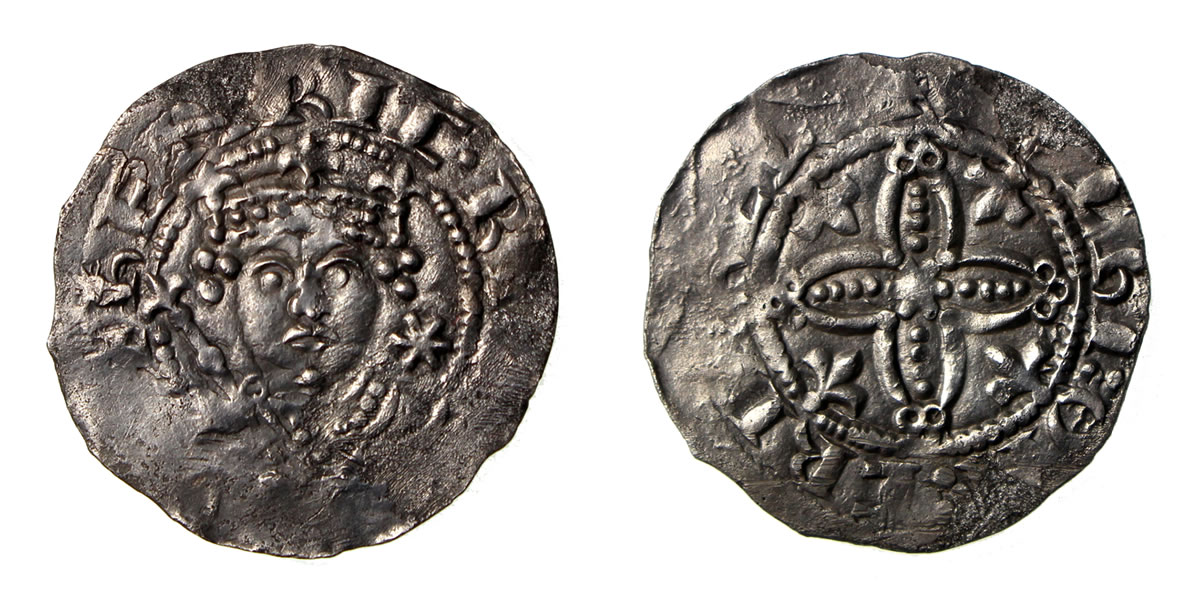In the 10th century, following reforms to the coinage and the unification of disparate Anglo-Saxon kingdoms into ‘England’ under King Æthelstan and his successors, coins began to be commonly minted at various sites across the ‘Burghal’ system-including places such as Wareham, Wilton, Malmesbury and Worcester. Cricklade is added to this list in the middle of the 10th century. The earliest coin known from the latter consists an issue of King Eadgar (959-975) belonging to his reform coinage of c. 959-973. This seemingly unique piece has been recorded on the PAS (Fig. 3), struck by the moneyer Sigewold and demonstrating the mint signature ‘CROCIC’ to denote its striking at Cricklade. It should be pointed out at this juncture that where the moneyer’s name appears on coins, this pertains to the manager or overseer of the operation – not the individual physically hammering out the coins at the very end of the process. Being a moneyer in the Anglo-Saxon and Norman period was almost akin to the way a finance speculator might operate nowadays on behalf of a client, effectively operating under a licensed agreement, paying the King a fee in order to maintain the privilege of owning dies and being rewarded with a cut of the tax levelled when people came to the mint in order to change their coins for the latest type. Rents and taxes generally had to be paid in the latest ‘type’ to be issued, hence why later Anglo-Saxon and earlier Medieval monarchs issued a number of different pieces throughout their reigns. This method of changing the coinage every few years with a different obverse and reverse design is referred to as ‘Renovatio Monetae,’ in numismatic parlance.
Production of coins at this site appears to take off in the late Saxon period, with the EMC (Early Medieval Corpus) recording a total of 53 coins struck at the mint between the reigns of Æthelred II (978-1016) and Harold II (1066). The tumultuous events of 1066 seem to have had little effect on the manufacture of coin at the town, as the Cricklade workers appear to have turned out a number of pieces representing most of the types struck for William I throughout his reign. Indeed, the moneyer who operated at the mint under Harold, Leofræd, continues to strike coins under William. It is under the latter’s rule that Cricklade demonstrates the greatest number of moneyers striking for its entire history of operation (three), with most of the Anglo-Saxon kings only retaining one or two there. After William I’s death in 1087, production at Cricklade tails off again. Only a very few coins are struck at the mint under the rule of his son William II ‘Rufus’ (1087-1100), all products of the moneyer Eadulf. The latter strikes pieces of types II and III, with the mint apparently closing somewhere between c. 1093 and 1096. Up until recently, with no later coins demonstrating a mint signature denoting Cricklade, it was thought that the mint never re-opened.
That was the case, until a recent discovery by a metal detectorist striding the fields of North Wiltshire (Fig. 4). Discovering an exceptionally preserved penny of Henry I (1100-1135) corresponding to British Museum Catalogue (BMC) type XIV, they contacted John Philpotts at Silbury Coins who was only too happy to identify and assist with the recording of this highly significant find. In due course, the coin was sold to Silbury Coins, who have provided details and high-quality images to enable a proper analysis and this subsequent article.









